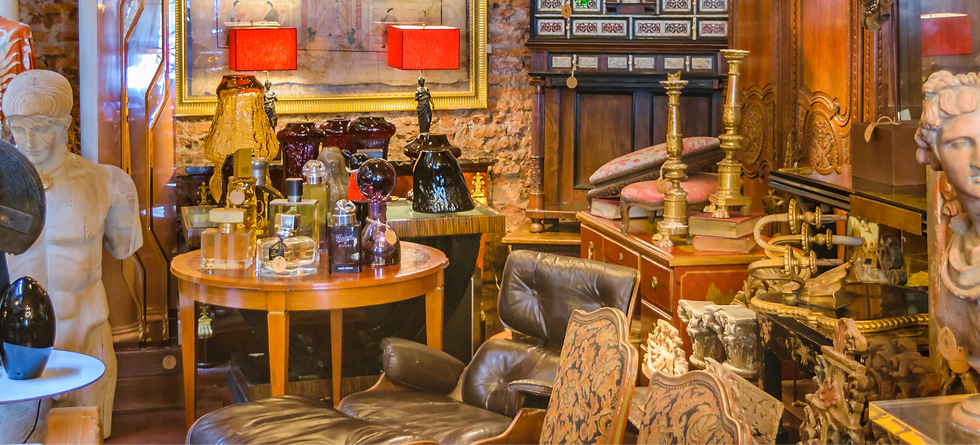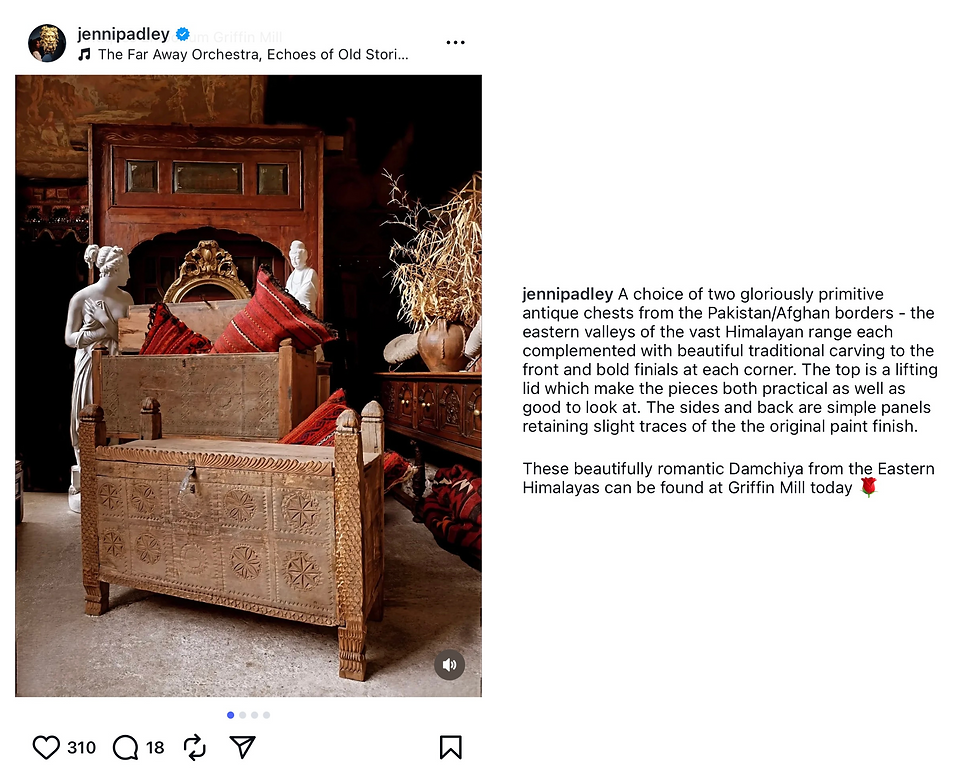How Antique Dealers Can Attract High-Value Collectors Through Instagram & Facebook
- Isabel Davison

- Sep 5
- 3 min read
Antique dealers have always thrived on one thing: connection. Someone walks into your shop, runs their hand across a piece, and suddenly they’re in love with it. But here’s the catch - most serious buyers aren’t just wandering down the high street anymore. They’re scrolling on their phones.
If you’re not showing up where collectors spend their time online, you’re invisible to them. The good news? Instagram and Facebook weren’t built for cheap, mass-market products. They were built for visual stories, which is at the very heart of why we collect antiques in the first place. We are people who love stories!
So how do you take centuries-old craftsmanship and bring it to life on modern platforms?

1. Showcase the Story Behind Each Piece
Collectors don’t just buy a chair or a cabinet. They’re buying the history that comes with it.
Who made it?
Where did it travel?
Why does it matter?
Instead of only posting product photos, write captions that pull people in. For example:
“This Georgian writing desk sat in a lawyer’s office in Edinburgh for nearly 200 years. Every mark tells part of its story - and it’s ready to start a new chapter in someone else’s home.”
That’s the type of post that makes a collector stop scrolling.

2. Use Video to Bring Pieces to Life
Flat photos don’t do justice to antiques. Video does.
A slow pan across the detail of carved wood.
A quick reel of a restoration before-and-after.
You talking about the craftsmanship in your own words.
Short, authentic clips are outperforming everything else on Instagram and Facebook right now. Don’t overthink production. Just pull out your phone and start filming.
3. Target the Right Buyers with Facebook Ads
Here’s where most antique businesses miss out: relying only on organic posts. Organic reach is shrinking. If you want serious collectors to find you, paid ads are the shortcut.
The trick isn’t spending a fortune - it’s spending smart. You can target ads to people who:
Already follow interior design brands.
Have interests in antiques, art history, or vintage furniture.
Live in high-income postcodes or cities known for collectors.
Imagine running a £10/day ad showing your latest 19th-century cabinet to people who already follow Sotheby’s, Christie’s, or top interior designers. That’s laser-targeted visibility.
Want help running ads for your antiques?
4. Make It Easy for Antique Collectors to Enquire
It’s not enough to post. You need to guide buyers to the next step. Add clear calls to action:
“DM us to arrange a private viewing.”
“Click here to see more photos of this piece.”
“Book a 10-minute call to discuss shipping.”
Collectors are busy. The easier you make it for them to connect, the faster they’ll buy.

5. Consistency Builds Trust
Think of your Instagram or Facebook page as your digital showroom. If a potential buyer visits and sees one post from six months ago, they’ll assume you’re not active - or worse, not serious.
Posting consistently (3 - 4 times a week) isn’t just about reach. It signals professionalism. It says: this dealer is alive, active, and ready to do business.
The Bottom Line
Instagram and Facebook aren’t “nice extras” anymore. They’re where high-value collectors live.
And the dealers who learn to meet them there are the ones who will keep selling, not just to locals, but to buyers across the country and abroad.
Your antiques already have the history. Social media is just the new stage.
Ready to connect with more high-value collectors online? I help antique dealers and restoration businesses turn social media into a steady stream of serious buyers. Book your free antique marketing audit today.




Comments